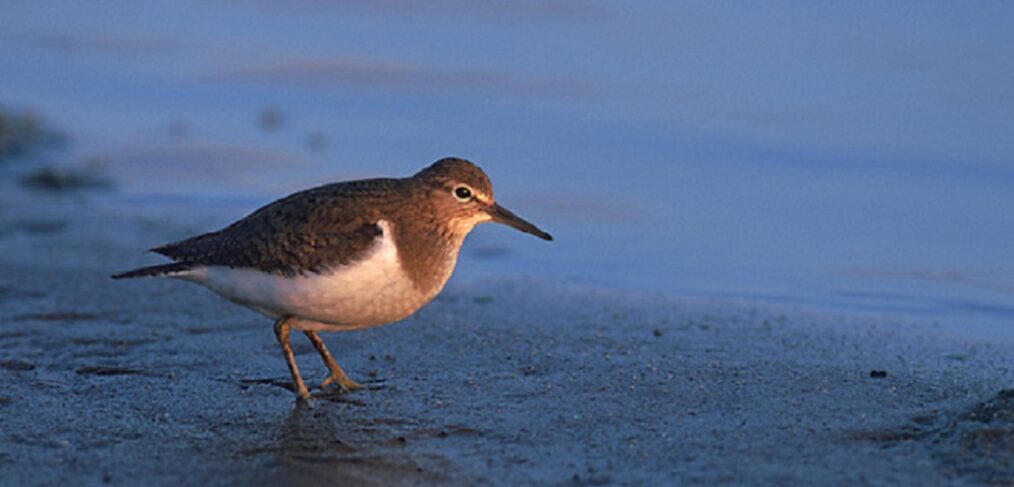
species of the week #93 – common sandpiper
A gifted actor at the edge of the river? That’s the riverside runner! Its hurried stride along unobstructed riverbanks is its trademark. But it develops its acting skills during the breeding season: if it discovers a potential danger for its chicks, it is at its best. Then it plays “injured bird, easy prey” and staggers in front of the predator to lure it away from its chicks.
| Distribution status in Rhineland-Palatinate | Threatened with extinction |
| Residiual occurance | Natura 2000 sites between Cochem and Wittlich, Selz valley and along the Rhine between Germersheim and Speyer |
| Last sighting in Rhineland-Palatinate | current |
| Habitat | Gravel banks along rivers and lakes |
| Threat | Water development, human disturbance of breeding sites, gravel and sand extraction |
The sandpiper is a migratory bird that returns to Central Europe from Southern Europe and Africa in April. It likes to settle on gravel banks of rivers, but can also be found in gravel pits, sewage ponds and smaller pools.
The sandpiper often stands crouched and slightly bent over. The legs are relatively short, the tail long. The upper side is brown, with fine brown and grey patterns. The white wedge between the base of the wing and the breast of the sandpiper is striking. In flight the white wing stripe is conspicuous. The dark eyes are white-rimmed.
It can be seen foraging on waters adjacent to dry meadows. Common sandpipers feed on small crustaceans, molluscs, but also on spiders and insects that hang around on the banks.
The nest is a hollow in the ground lined with grass or leaves. Common sandpipers usually lay four eggs, which are laid in the gravel or sand in May and incubated for about 21 days. Because the small white eggs are so similar to the surrounding pebbles, they are often accidentally trodden on while walking along the shore. Shortly after hatching, the young birds leave the nest to escape any floods.
Common sandpipers are diurnal and nocturnal, but fly longer distances mainly at night. In addition to their namesake run along the riverbank, they are easily recognised by their characteristic flight over the water at low altitude, alternating rapid wing beats with gliding phases with hand wings held downwards.
There are currently just over 200 breeding pairs in Germany. For this to continue to grow, the breeding sites must not become overgrown. Originally, the constant rearrangement processes of unimproved rivers kept the banks free of vegetation. Due to the regulation of almost all rivers by dams, weirs and groynes, the habitats and thus the populations of the sandpiper have declined drastically in recent years. Outside Germany and the Netherlands, a rapid decline of the species is taking place. Long-term conservation is considered uncertain.
Click her for more exciting species of the week
Image: By Marek Szczepanek – Own work, CC BY-SA 3.0
